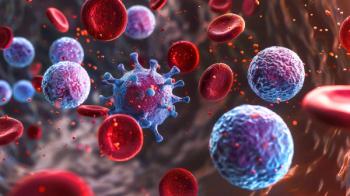There are differences in treatment access and clinical outcomes for adolescents and young adults (AYA) who have cancer, with some factors including insurance, race, sex, and socioeconomic status. Previously, mortality disparities have been shown among Black and Hispanic communities; however, Indigenous communities, including American Indian or Alaska Native populations, and Native Hawaiian or Other Pacific Islander populations are often excluded for studies, resulting in a poor understanding of their health outcomes. Using federally defined racial categories in the US, authors of research published in JAMA Network Open quantified differences in the risk of late-stage diagnosis and overall survival (OS) for the 10 deadliest AYA cancers.
For this retrospective cohort study, data from a US national hospital-based oncology database on AYA patients aged 15 to 39 years were used. Additionally, all 291,899 eligible patients received a diagnosis from January 1, 2004, to December 31, 2017, with 6 months or more of follow-up.
The primary end points were late stage at diagnosis and OS, defined as time from diagnosis to death. Additionally, differences in risk of death by race were evaluated and assessed, with adjustments being made for patient and cancer covariates where necessary.
The majority of patients were White (n = 240,192; 82%), and the remaining participants were Black (n = 40,851), Asian (n = 8412; 3%), American Indian or Alaska Native (n = 1457; 1%), and Native Hawaiian or other Pacific Islander (n = 987; 0.3%). Additionally, most patients reported having private insurance (n = 215,661; 76%), living in metropolitan areas (n = 242,154; 86%), had higher income (n = 167,546; 63%), and higher education levels (n = 162,149; 61%). The most common cancers were breast (n = 79,195; 27%), lymphoma (n = 45,500; 16%), melanoma (n = 36,724; 13%), testis (n = 31,413; 11%), central nervous system (CNS, n = 26,070; 9%), colon or rectum (n = 22,545 [8%]), cervix (n = 20,923; 7%), sarcoma (n = 14,951; 5%), ovary (n = 8982; 3%), and lung (n = 5596; 2%). Most patients received surgery as their treatment (n = 236,222; 81%), with chemotherapy (n = 168,077; 58%) and radiotherapy (n = 94,750; 32%) being the next common treatments.
According to the findings, those who had significantly higher odds of late-stage diagnosis were patients who were Asian (AOR, 1.20; 95% CI, 1.14-1.26), Black (AOR, 1.40; 95% CI, 1.36-1.43), and Native Hawaiian or Other Pacific Islander (AOR, 1.34; 95% CI, 1.16-1.55). By disease state, Black patients had much higher odds of late-stage diagnosis for nearly all cancers compared with White patients. These cancers included breast (AOR, 1.28; 95% CI, 1.22-1.34), cervix (AOR, 1.22; 95% CI, 1.11-1.34), colon or rectum (AOR, 1.19; 95% CI, 1.10-1.29), lung (AOR, 1.40; 95% CI, 1.18-1.67), lymphoma (AOR, 1.37; 95% CI, 1.29-1.45), melanoma (AOR, 2.49; 95% CI, 1.81-3.39), and testis (AOR, 1.37; 95% CI, 1.16-1.60).
Key Takeaways
- Disparities in Late-Stage Cancer Diagnosis: The study highlights significant disparities in the odds of late-stage cancer diagnosis among different racial groups, with Black, Asian, and Native Hawaiian or Other Pacific Islander patients experiencing higher rates of late-stage diagnoses compared to White patients.
- Survival Rates Vary by Race: Overall survival rates also varied significantly by race, with Black, Native Hawaiian or Other Pacific Islander, and American Indian or Alaska Native patients showing higher mortality rates across nearly all cancer types compared to White patients.
- Need for Inclusive Research: The study emphasizes the importance of including underrepresented racial groups in cancer research to better understand and address disparities in diagnosis and outcomes. The authors suggest future research should include other patients from different backgrounds who were excluded from the study.
Further, Asian patients had higher odds of late-stage diagnosis for lung cancer (AOR, 2.86; 95% CI, 2.09-3.98) and melanoma (AOR, 1.75; 95% CI, 1.09-2.74) compared with White patients; however, they had lower odds of late-stage diagnosis for breast cancer (AOR, 0.90; 95% CI, 0.82-0.99). American Indian or Alaska Native patients had significantly higher odds of late-stage diagnosis of testis cancer (AOR, 1.52; 95% CI, 1.09-2.09), but a lower likelihood of high-grade CNS cancer at diagnosis (AOR. 0.65; 95% CI, 0.43-0.96) compared with White patients. Native Hawaiian or Other Pacific Islander patients were only shown to have a higher likelihood of late-stage melanoma at diagnosis (AOR, 3.21; 95% CI, 1.04-9.20).
The median follow-up was 62 months (IQR, 34-102 months), and according to the results, OS varied significantly by race across nearly all cancers, except for CNS and ovarian cancers. By race, mortality rates were approximately 24% for Black patients, 22% for Native Hawaiian or other Pacific Islander patients, 20% for American Indian or Alaska Native patients, 16% for Asian patients, and 15% for White patients.
Additionally, the investigators observed that Native Hawaiian or other Pacific Islander and American Indian or Alaska Native patients had the greatest deficits in 10-year OS rates among the greatest number of cancers. These cancers included cervical cancer (65.2%), colon or rectal cancer (43.6%), sarcoma (47.7%), and melanoma (55.0%) for Native Hawaiian or other Pacific Islander patients, and CNS (61.4%), lung (28.9%), ovarian (61.2%), and testicular cancers (86.5%) for American Indian or Alaska Native patients. Despite this finding, the authors note that these racial subpopulations did not have a corresponding increased risk of late-stage diagnosis.
According to the investigators, limitations of the study include its retrospective design, the lack of data on secondary cancers or recurrence rates, and the exclusion of patients who are Hispanic. Additionally, the authors note that although White patients were used as the reference group because of their majority status, they intend for equitable outcomes for all who are receiving oncologic care. They urge future research to include patients of other racial or ethnic backgrounds.
REFERENCE
Taparra K, Kekumano K, Benavente R, et al. Racial Disparities in Cancer Stage at Diagnosis and Survival for Adolescents and Young Adults. JAMA Netw Open. 2024;7(8):e2430975. doi:10.1001/jamanetworkopen.2024.30975



















































































































































































































